The war that we need to know so much more about

It was my extreme privilege to be one of the millions who participated in our Liberation War. Even after 53 years and having read a considerable number of books on it, many of us feel that we still have so much left to learn about the war which gave us our independence.
Our Liberation War is something we are proud to talk about, read about, and reminisce about but have not done much research on. The books that we have, and they are all very relevant and useful, can broadly be categorised in two: of the autobiographical nature, filled with reminiscences and descriptions of authors' personal involvement and actions; and those which deal with the overall history of the war, focusing on the big picture of social, economic, and cultural reasons as to why the war became inescapable. But what we feel terribly in need of are books that focus particularly on the nine-month-long war, with all its complexities and challenges. Bangabandhu was our leader and he did call upon us to prepare "with whatever we had," but there was no time for any preparation. So when the genocide began, we responded with courage and patriotism but not any preparation. All our responses were spontaneous and filled with raw courage. How that initial response became an armed war and how we organised ourselves into a functioning force is the story that not many books have included.
The newly published Bangla translation of 1971: Resistance, Resilience and Redemption, by Major General Md Sarwar Hossain, fills a significant gap in this respect. The book is special in many ways. It is a product of meticulous research conducted over 17 years. It is objective and free of the personalised accounts that mark many of the books on Bangladesh's Liberation War. The book concentrates on the war itself and nothing much else, giving details of every aspect of it. That makes it a very special text.
The first chapter contains a detailed description of the Pakistani military deployment as on March 25—what the strength of the Pakistan army was at that point and how it spread throughout the country. It gives region-by-region details of the military's presence throughout the country. When the war began in March 1971, Pakistan had only the 14th Infantry Division with several brigades for the central region in Joydebpur, the southwestern region in Jashore, the northern region in Rangpur, and the eastern region in Cumilla. The book briefly describes the naval and air components of the Pakistani forces, including the paramilitary force the East Pakistan Rifles (EPR) and the East Pakistan Police. This detailed description of Pakistani deployment, with the strength of the forces, helps us to understand the strength of the enemy at the outset.
The author's accounts of our initial resistance after the genocide started on the night of the 25th is very important and helps us to fully understand how formidable was the task that lay ahead for the people of the country. This is a valuable chapter as it sets the tone for the rest of the story as war unfolded over the following nine months.
The book describes in detail the resistance at various points in Dhaka city and around the country. The resistance was spontaneous and, by definition, unorganised. What shines through is the spirit of the people. For the most part, they didn't have the slightest idea of what the enemy's strength was. Secondly, they had no notion of how to face a well-organised, highly disciplined, and trained force which was armed with the most lethal weapons of the day and was thoroughly brainwashed to hate us. The sporadic resistance, organised within the shortest possible time, had its own shortcomings. But what this initial resistance did was sow a seed in the hearts and minds of the people that the Pakistani army, however powerful, was not invincible and could be struck against. This opened up our hearts and minds. The enemy, however powerful, was not invincible and we, howsoever not trained to handle arms, could attack, harass, and sometimes defeat the enemy. This newly found confidence was most crucial. It greatly contributed to a transformation of our mindset.
The initial challenges of setting up the Bangladesh army and its setting out in operational sectors is well-described in this book. Its details about the strength of our force, down to the number of officers and soldiers in each sector and sub-sector is most useful in terms of understanding how we were preparing ourselves. The author successfully conveys the enormity and complexity of this task. For each of the 11 sectors, the author gives full details of the number of officers and their men, including descriptions of sub-sectors. In the past, we have come across such accounts regarding some sectors, but to find all the information in one place serves a very useful purpose for future research. The most important thing is that the book provides a graphic example of the total operation of Bangladeshi forces using very well laid out colour maps which are authentic and help the reader to fully understand the military operations that took place.
The author's accounts of the irregular forces are very significant. He weaves together an overall account that brings out the stories of all our irregular forces, namely Kaderia Bahini, Mirza Abdul Latif Bahini, Afsar Battalion, Halim Bahini, Hemayet Bahini, Akhbar Bahini, Forces of Engineer Abul Hossain, Baten Bahini, Kudus Bahini, and Gafur Bahini. I have not seen such a detailed presentation of all these irregular bahinis before. The number of irregular forces and the contribution they made in killing and pinning down the enemy is well worth reading. The irregular forces were springing up all over the country and the resistance they were giving to the Pakistani Army needs appreciation. I feel that more research should be done on the role of the irregular forces to reassess their role in our Liberation War.
There is also an impressive region-based account of important operations of Bangladesh's regular and irregular forces and how cleverly and creatively our forces were blending these forces to make the most effective use of our limited resources.
In Chapter 8 of the book, an interesting argument is made about the effectiveness of the Bangladesh Forces in achieving the final victory in December. The author asks a very important question: "Without the support of Mukti Bahini how much longer would it have taken the Indian Army to reach Dhaka?" In response to the question, a senior Indian Army officer thought it might have made a difference of two weeks. Lt Gen Niazi, immediately after surrender, remarked "support of the Mukti Bahini might have made a difference of two weeks." The author makes the argument that, for a war that lasted 14 days, a difference of two weeks amounts to doubling the duration of the whole war. Given that the Cold War was at its height, the Vietnam War was at an intense stage, and US presence in the Asia-Pacific region was very strong, we quickly realise the global factors which were clouding our Liberation War and how quickly our war could have become a regional one.
As we annually celebrate our independence day and recollect other vital days and events of the most important phase of our lives and as we strive collectively to build Bangladesh, we must also spend more energy in unearthing the facts of our magnificent struggle and increasing public awareness of those historic days.
Mahfuz Anam is editor and publisher of The Daily Star.
Views expressed in this article are the author's own.
Follow The Daily Star Opinion on Facebook for the latest opinions, commentaries and analyses by experts and professionals. To contribute your article or letter to The Daily Star Opinion, see our guidelines for submission.
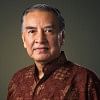
 For all latest news, follow The Daily Star's Google News channel.
For all latest news, follow The Daily Star's Google News channel. 



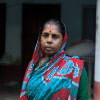

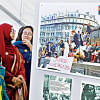
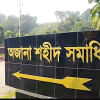
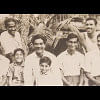


Comments